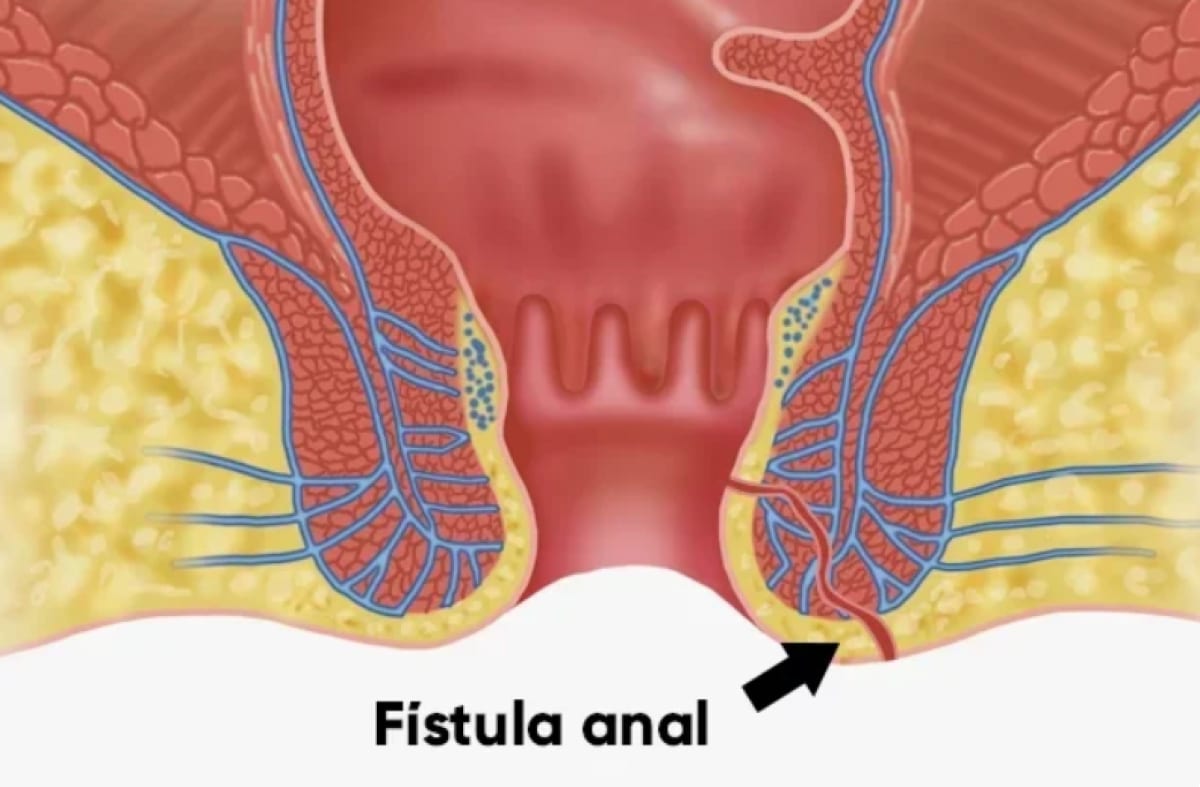
Fistulas are very annoying and in many cases They can cause complications over many years. It is an abnormal connection between two internal parts of the body, generally communicating two different organs and in some cases we are talking about unusual parts such as the esophagus and the trachea. The most common are anal or perianal.
Many people take time to realize that they have a fistula, since it starts with the appearance of a pimple oozing pus and then they observe that it does not finish healing over time. Given the concern, they decide to go to the doctor where a fistula is diagnosed.
Why do fistulas occur?
We will address the case of anal fistulas, given that they are the ones that suffer the most and the most recurring. It occurs when there is an obstruction of the glands, which over time cause this unpleasant fistula.
They appear as a perianal pimple or abscess or a form of lump where it even hurts. They are red in color, some of large size and many of them They ooze a yellowish or reddish fluid. This is due to the fact that one of the orifices of the fistula has closed and causing such discomfort, in many cases there is a fever or great discomfort that prevents sitting down.
This ailment usually appears in men, between 30 to 50 years, although age may be relative. Many of these cases tend to be associated with and are caused by the Crohn's disease or neoplasms, an abnormal formation of some part of the body of a tissue of a benign or tumorous nature.
The doctor will make a more precise diagnosis by performing a examination in consultation and carrying out some tests, such as endoanal ultrasound, pelvic resonance or colonoscopy.

@tuasaude
Causes and symptoms of a fistula
Anal fistulas are caused by an infection that starts in the anal gland. This infection causes an exit to be caused where it should drain said infection, usually appears near the skin of the anus. It will be in the form of a tunnel under the skin along this secretion tract. This tunnel connects the anal gland or anal canal with an exit point to the outside, usually around the anus.
General symptoms are usually a hole in the skin around the anus It will have an inflamed form, with a red or pus-filled spot, with a high chance of being opened to expel the infection. They can also appear great discomfort, especially when defecating or wanting to sit. Some people are more sensitive to the infection and develop a fever.
Why do these fistulas come out?
There are many causes of its origin. Some people are already born with a fistula and others have created this condition by injuries, infections, complications after surgery or by the presence of Crohn's disease or ulcerative colitis.
What are colonic and anorectal fistulas?
As we have described, an internal fistula in a tunnel formed inside the organism, generally communicating two internal organs. An external fistula is an abnormal tunnel between an internal and external organ.
- Una colonic fistula it is an abnormal tunnel from the colon that travels to the surface of the skin. Or an internal organ such as the bladder, vagina, or small intestine with an outer surface of skin.
- La anorectal fistula It is an abnormal tunnel that travels from the anus or rectum to the surface of the skin, usually around the anus. Women come to suffer from rectovaginal fistulas, they are anorectal and communicate the anus or rectum with the vagina.
How is the treatment of a fistula?
Generally, the treatment It will depend on the cause and severity. Some fistulas tend to close on their own, others with the help of antibiotics, and in others surgery is used.
When to intervene surgery is required, where it is necessary to cure the fistulous tract and empty it. Only in some cases, surgery can be complicated by having to intervene two organs and where they should be repair both holes, where the implantation of an artificial anus is necessary.
Simple operations usually last between 30 to 90 minutes, then 1 day of hospital admission is recommended. The person operated on will notice improvement after a few days, although it is a long healing process and in many cases very painful. We detail the steps of a surgery:
- The Anesthesia local so as not to feel any pain.
- A probe will be inserted that will serve as a guide to cut along the fistula.
- The surgeon will use an instrument to scrape off any buildup of tissue found in the fistula. The abscesses will also be opened and drained.
Finally, will close the rectal opening of the fistula. The other opening will remain open for other sutures. In some cases, a fine thread-like material is placed to help drain fluid from the wound. Day after day the patient has to heal said wound with sitz baths and under medical indications.
